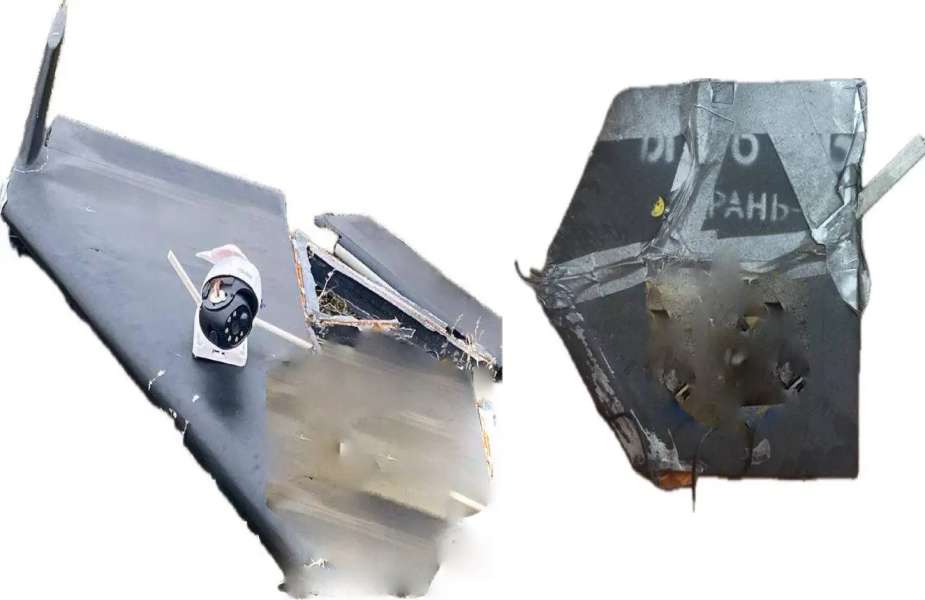Russia uses new Shahed-136 drone with video camera to spy Ukrainian rear lines
In March 2024, a photograph revealed on Ukrainian social media platforms showcasing the wreckage of a Shahed-136 drone indicates that Russia might have modified its drone arsenal. By converting the Iran-designed Shahed-136, recognized in Russia as Geran-2, into sophisticated visual reconnaissance devices, this strategic alteration underscores Russia's technical creativity and flexibility amid a continuing conflict.
Follow Army Recognition on Google News at this link

Russian Shahed-136 modified with integration of a pan/tilt video camera (Picture source: Ukraine Social Media)
The core innovation involves the integration of a pan/tilt video camera onto these drones, previously recognized for their role as loitering munitions against Ukrainian civil and military infrastructure since October 2022. This modification transforms them into long-range, high-endurance reconnaissance assets capable of providing real-time video intelligence from considerable distances behind the front lines. This visual reconnaissance capability fills a critical gap in Russian military capabilities, adding a new dimension to their battlefield strategy.
An important aspect of this adaptation is the utilization of Ukrainian cellular networks for data transmission, accomplished through 4G modems and local SIM cards. This approach presents both operational advantages and potential vulnerabilities, opening avenues for electronic and cyber countermeasures from Ukraine.
While this technology offers Russia significant advantages in intelligence gathering and precision strike capability, it also increases the drones' risk of detection and interception. Cellular data transmission could reveal their presence and general location, challenging their typically low-profile status
The adaptation of the Shahed-136 into reconnaissance platforms suggests a reevaluation of battlefield tactics, providing Russia with a valuable capability to direct strikes against strategic targets deep within Ukrainian territory. This ability could enhance the effectiveness of missile strikes and other forms of attacks, thus enhancing Russia's position in the conflict.
The choice of a seemingly rudimentary configuration, using readily available commercial components, reflects an approach focused on speed, cost-effectiveness, and adaptability. Although this setup may appear primitive, it underscores a commitment to maximizing operational efficiency while minimizing costs.
The modification of Shahed-136 drones and their use on the Ukrainian front illustrate the constant evolution of modern warfare, where technological innovation and strategic flexibility become key elements of battlefield dominance. As Russia continues to explore new methods to enhance its offensive capabilities, Ukraine and its allies will undoubtedly be called to respond with equally inventive defense and counter-attack strategies.
There's also the possibility that the camera-equipped Shahed retains its explosive payload. This would allow it to autonomously strike targets of opportunity, without the need for calling in another weapon, which takes time and can be very costly if that weapon is much more complex. This would be a significant leap in capability, allowing for the attack of targets of opportunity virtually anywhere in Ukraine where there is a stable cellular data connection.
For the record, Russia has already implemented several enhancements and innovations to the Shahed-136 drone since the beginning of the invasion. These advancements include the adoption of specific materials or coatings capable of evading radar detection, as well as a new composite structure that aids in mass production while potentially reducing the drone's radar signature. The modifications also involve replacing traditional explosive charges with projectiles filled with tungsten balls, offering a different kind of destructive capability. Additionally, the drones now feature a variety of color schemes, both light and dark, designed to improve their survivability during operations conducted in daylight and at night.























